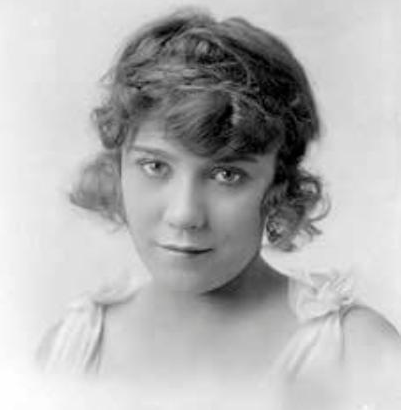One hundred years ago this week, Grace Kingsley reported that an actress took great offense at a musical revue called Satires of 1920:
At last the awful gulf between stage and screen has been bridged, and those cruel satires on motion pictures which Fanchon and Marco use in their revue at the Mason are going to be toned down, if Carmel Myers has anything to say about it. In fact, so hurt was the young Universal star last Monday night when she saw the awful things Fanchon and Marco have done to her pet artistic medium, that Miss Myers invited the two artists over to Universal to see for themselves if picture players don’t sometimes express great things and all that. The satirists went, had their pictures taken with Miss Myers, promised, cross their hearts and hope to die, they’d cut some of the venom out of their satires.
I suspect that they didn’t change much: their two-week run in Los Angeles was ending on Saturday, so it only had a few days to continue to offend Miss Myers. The show went on to tour all over the United States, from towns like North Platte, Nebraska to cities like New York.

The show didn’t bother other people in Hollywood. When Kingsley reviewed it, she said “the first half of the show is devoted to a burlesque of motion picture activities, which was greatly enjoyed by the big number of professionals in the house.” Overall, she thought it was “full of pep and spice and everything nice” even if some of the lines were so old that “surely some of those jokes have long been household words in the best phonograph parlors.” She blamed the man who wrote the show’s book, veteran vaudeville write Jean Havez, who was also writing gags for Buster Keaton at the time.
Carmel Myers’ annoyance didn’t hurt them: Fanchon and Marco went on to a long career in the film industry. Mary Mallory wrote a detailed biography of them. The Wolff siblings went on to stage live prologs to films for the Pacific Coast Theater chain, and in 1928 they were hired by the Fox Studios to make shorts. Fanchon Wolff Simon also choreographed musical numbers in films until the 1950’s. Her son, William Simon Jr., maintains a website about them.

Kingsley’s favorite film this week was The Penalty starring Lon Chaney. She’d been tremendously impressed by Chaney since The Price of Silence (1916) and his work in this film was even better. It was:
one of the finest characterizations the screen has ever seen, viz.: Lon Chaney’s portraying of Blizzard in Gouverneur Morris’s The Penalty at the California. I cannot indeed imagine any actor of either stage or screen interpreting the legless and contradictory-natured Blizzard with a finer artistry, discrimination and intelligence than does Chaney. His acting, in fact, heresy though it may sound, in my estimation ranks with Barrymore’s in Dr. Jekyll and Mr. Hyde.
Morris’s Blizzard was the embodiment of a terrible vitality, mesmerizing power, love of art, imagination, and sardonic humor, blended with sensuality, brutality, and fiendish ingenuity. Yet men and women who came under his sway loved him. The portrayal of that nature and its acts was Chaney’s big task, and he accomplished it. Nay, more. Even more than Morris made you believe it in his written story, Chaney makes you believe it on the screen.

Now The Penalty “is considered by many critics to be one of Chaney’s finest performance and certainly one of his best films,” according to Chaney expert Jon Mirsalis (it’s available in DVD and Blu-Ray). Current film historian Fritzi Kramer likes it as much as Kingsley did, but she noticed part of his technique that Kingsley missed:
Blizzard is a complex character. He is intelligent, witty and has a shred of sentimentality still clinging around the edges of his personality. Chaney captures all this and, due to his extreme ability to control his own body, makes the audience truly believe that he is an amputee. Blizzard’s lair is full of ropes and ladders and poles, devices designed for a man shortened by the loss of his legs and with his arms built up through constant use. Chaney uses these devices casually, as if he has been living with them for years. They are not props, they are part of his world. (So many actors have attempted this sort of characterization and failed that I hardly need to emphasize how impressive this is.) This ability to utterly inhabit his characters and pour himself into their physicality is, I think, Chaney’s single greatest asset.
She concluded that it’s not only one of her favorite Chaney films, it’s one of her all-time favorite silent films.

In other dance news, Kingsley visited Theodore Kosloff’s dance school once again, but this time she saw the girls’ classes where “miniature Mary Pickfords are turning into split-pint Pavlovas.” Among notes on Altah Behrend from the Booth Tarkington ‘Edgar’ shorts and the currently-at-Sennett Madelaine Parker, she mentioned that “Agnes and Margaret De Mille are two pretty, demure and clever little girls, daughters of William De Mille, who are going to walk off with class honors if the others don’t watch out.”

That’s exactly what happened, at least for Agnes. She became a Broadway choreographer and she was credited with being the first to integrate story and dance in Oklahoma! (1943). Her other work included Carousel (1945), Brigadoon (1947) and Paint Your Wagon (1951). According to her autobiography Dance to the Piper, things didn’t begin so well. When she was 13, she auditioned for Kosloff and “he said my knees were weak, my spine curved, that I was heavy for my age and had ‘no juice’ meaning not limber. But he took me on.” Unlike Kingsley’s report, De Mille said “the plain truth is I was the worst pupil in the class.” Nevertheless, by the time she was 14 she felt that she’d found her life’s work so she kept going.


























